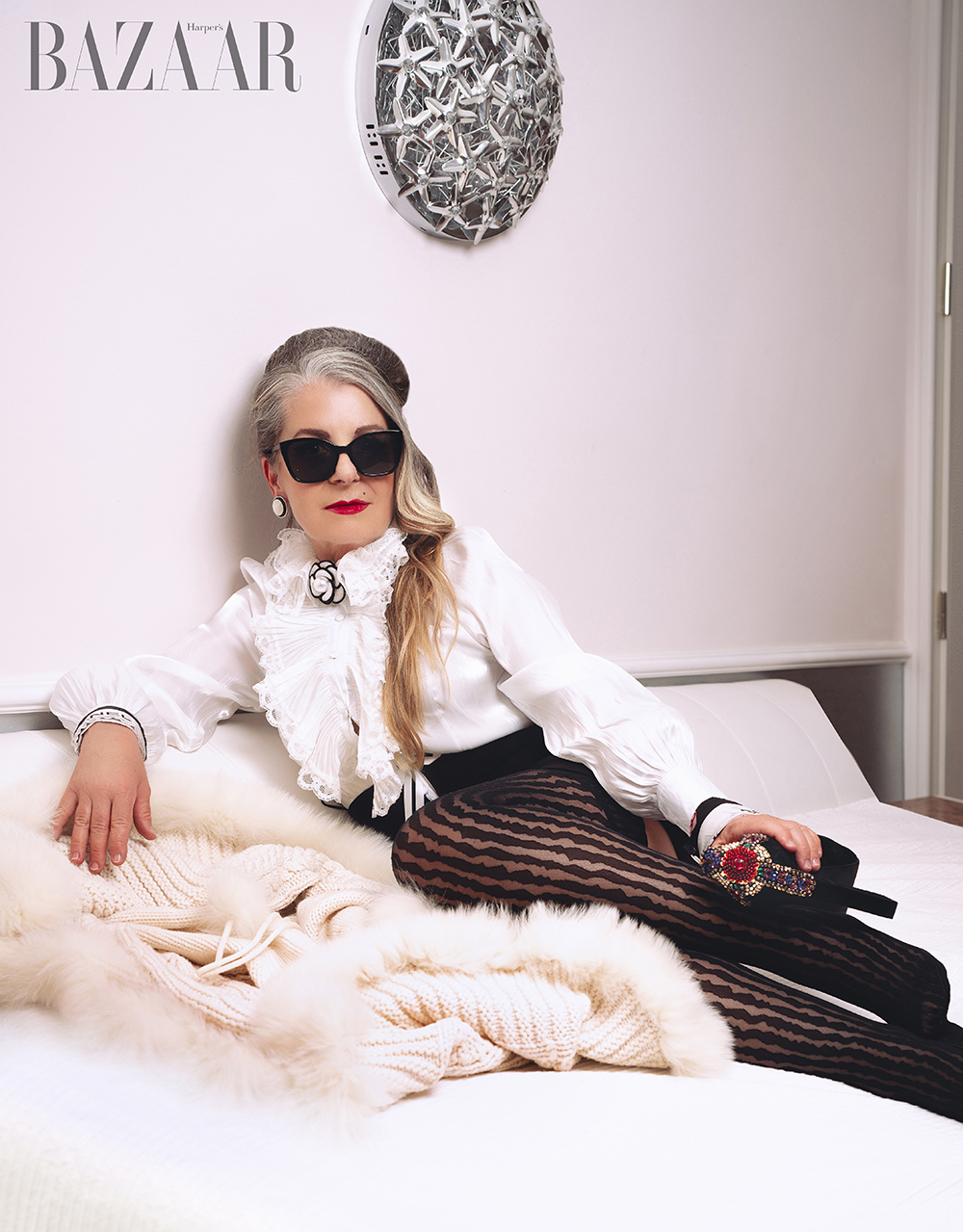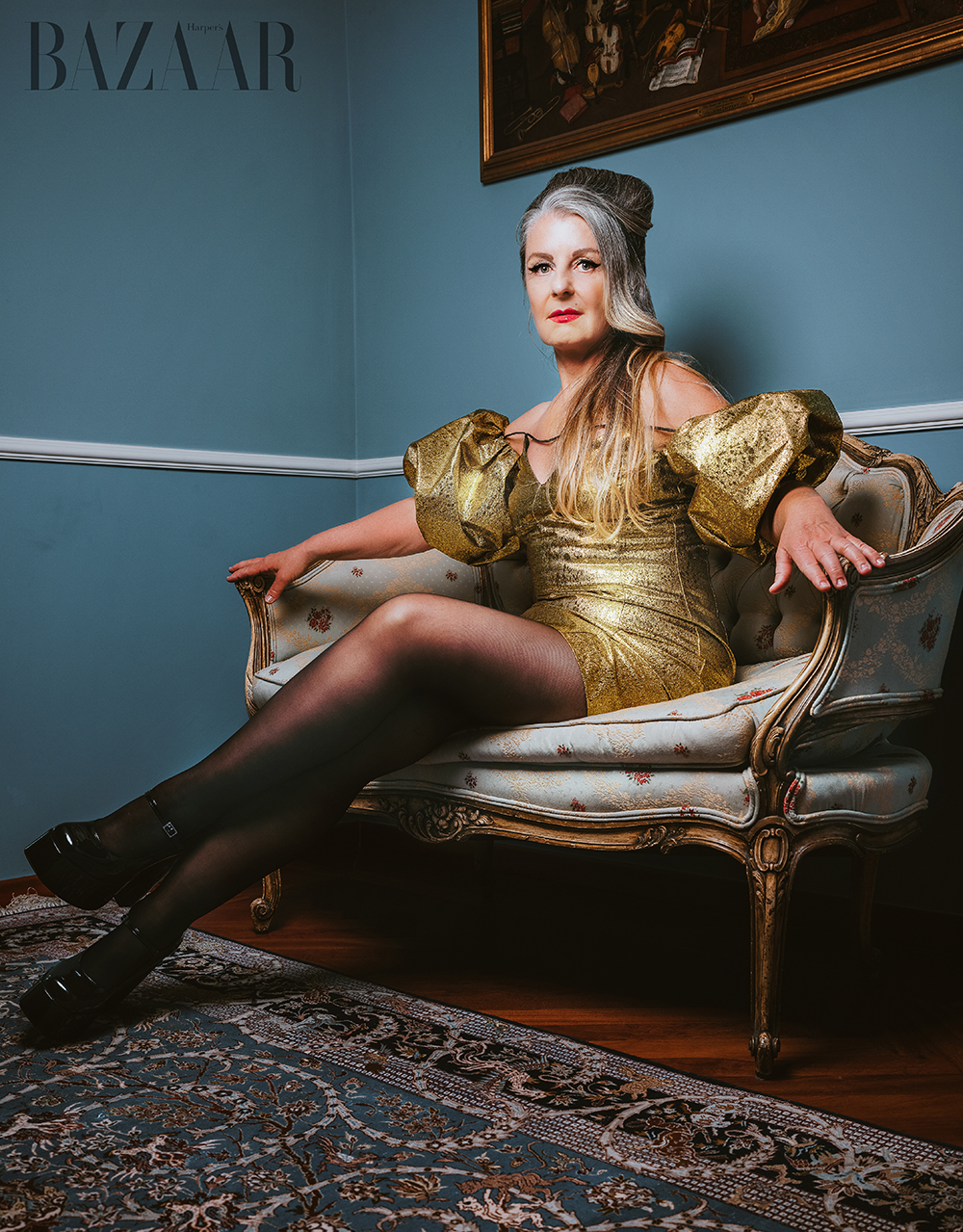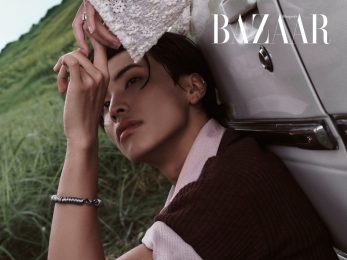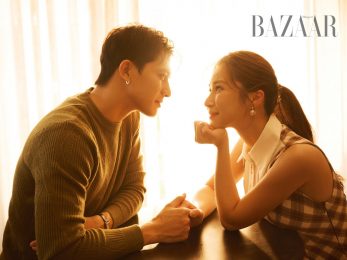
Dr. Ines Kaldas started her conversation with Harper’s Bazaar Vietnam by revealing, “I have visited Vietnam some 15 years ago with my young family at the time. Beautiful Hanoi, vibrant Ho Chi Minh City, Sai Gon, and the magic of Ha Long Bay provided us with unforgettable memories of a most delightful, multifaceted country. The joy and privilege of discussing with Harper’s Bazar Vietnam now gives me the pleasure to return, in a metaphorical sense – as, indeed, I hope to do so in person very soon.”
HBZVN: Dr. Kaldas, your career has spanned across multiple disciplines, from neuroscience to public administration, and now to art and film-making. What do you believe has been the key to your success in navigating and excelling in such diverse fields?
DR. INES KALDAS: I’m delighted with this question because it reflects both the beginning and current stages of my career.
I began my journey as a biologist, studying neuroanatomy by investigating the nervous system of crickets, which may sound amusing to non-biologists. Crickets served as a model for understanding how their nerve cells produce specific hormones. I wasn’t afraid to take what seemed like a “huge leap” from neuroanatomy to neurochemistry in the vertebrate brain. While this shift felt significant, it was simply another field within the broader scope of neuroscience. This change required me to step away from the familiar, driven by curiosity, a love for discovery, and an unconscious disregard for boundaries or comfort zones. I simply followed my passion.
What I didn’t realize at the time was how small that leap would seem years later when I made an even greater shift—leaving my beloved field of neurobiology for the world of security policy. Decades after that, I found myself bringing all my experiences together, becoming an artist, filmmaker, painter, and model.
Looking back, each step I’ve taken was accompanied by an increasing awareness of the spiritual context underlying our existence. With each transition, I overcame fears of change and the unknown. As I moved forward, I developed a deeper sense of purpose and courage, continually striving to become a better, freer, and more fulfilled version of myself. I didn’t have a clear view of this path from the beginning—it revealed itself as a thrilling adventure, and for that, I am deeply grateful.
As a painter, I capture the emotions of people and situations. As a model, I’m fascinated by the complex nature of the industry. My previous work in understanding how perceptions are formed helps me see modeling as “painting with emotions, gestures, and poses.” The key, for me, is daring to take those leaps—with mindful confidence.

HBZVN: You recently embarked on a new journey as a professional best-ager model. How has your background in neuroscience and art influenced your fashion choices and how you present yourself in this new role?
DR. INES KALDAS: A sense of elegance is something my mother instilled in us from an early age. Through my various engagements—whether in the arts, cultural events, business, or politics—I’ve had many opportunities to observe and learn about appropriate attire for different occasions. These experiences have helped me develop my own personal style and expression.
As for how art influences my fashion choices, I’ve come to realize that I can “feel” colors. I discovered this when designing the interior of our family home, a historical building we renovated with the theme of “water as a symbol” and the concept of “Flow.” I even created a short film on this theme, set in our house by the water.
By “feeling colors,” I mean I intuitively know what to wear. My fashion choices are guided by an emotional response to colors and styles that resonate with me in the moment.
Additionally, my background in neuroscience influences how I present myself. I understand that our perception is shaped from early childhood, and that everyone’s way of seeing the world is unique. I firmly believe that we all exist on the same level, each with our own individual gifts and expressions—our own forms of beauty. This inner beauty, a blend of confidence and kindness, is universally recognized across cultures.
This theme of inner beauty is central to my short silent film, Flow. As a model, I’m continually inspired by the wide range of creativity and beauty I encounter in the fashion world, from designers to photographers, stylists, and makeup artists. It’s a joy to discover and express my own unique style alongside such talented individuals.

HBZVN: Your life is a blend of science, art, and fashion. How do you balance these varied interests and what does a typical day look like for you?
DR. INES KALDAS: My background in neuroscience always stays with me, especially in how we form our perceptions. Our thoughts and emotions come from unique patterns of perception that are shaped by the environment we grew up in and our life experiences. These patterns often control what and how we see things. But once we become aware of them, we can choose to break free and see the world in new ways, opening up new possibilities and striving to reach our highest potential.
This realization is what gave me the courage to pursue different paths beyond neurobiology. Thankfully, I didn’t have to balance all my fields—neurobiology, public administration, art, and fashion—at once. They evolved over time.
Years ago, I became interested in how the European Union developed beyond economic interests, especially in foreign and security policy. This led me to leave biology and pursue a degree in public administration at Harvard’s Kennedy School of Government. I then used my background in biology to establish a security policy consulting business in Austria, focusing on nonproliferation and risk management for chemical and biological weapons.
Through risk management, I learned that “mission critical functions”—like safety, security, food, and infrastructure—are essential to society. But more importantly, how we choose to interact with one another is also critical for our survival and quality of life.
This idea inspired my silent short film Flow: The End of Linear Thinking, which suggests that mutual respect and mindfulness are just as vital to our lives as safety and security.
Art became another important part of my life. Initially, painting was a way for me to relax, but over time it became precious to me. When I paint, I enter a flow state, allowing me to process my experiences with people and situations.
As for fashion, I’ve always enjoyed it, but modeling started with a course last summer. Since then, I’ve worked with wonderful teachers and photographers who have taught me a lot, not just about modeling but also about myself. Modeling has given me a new way to express myself and find confidence.
Our recent project, the photos you see here in Harper’s Bazaar Vietnam, is a significant moment in my life.
Now, instead of describing a typical day, I’d like to share a special day—the day the idea for this photoshoot was born.
It all started when I attended a screening of Back to Black in Salzburg, a documentary about the late musician Amy Winehouse. I’ve always loved her music, and the film deeply moved me. It reminded me how, no matter who we are, we all face struggles. Despite our differences, we can relate to one another on a fundamental level.
After watching the film, I started thinking about my upcoming photoshoot with photographer Renata Zazulak. I wondered how I could embody Amy—not as a copy, but in a way that resonated with her human experience. How could I express those universal emotions that connect us all? This became the theme of our photoshoot.
I want to sincerely thank my incredible team—Photographer Renata Zazulak, Stylist Su Suri, and Makeup and Hair Artist Giota Mallioy—for helping bring this idea to life. I hope your readers enjoy this interpretation of “connecting with Amy” as much as we did.

HBZVN: As someone who has explored various forms of self-expression, how do you perceive the role of fashion in shaping our identity and societal interactions?
DR. INES KALDAS: I’m not a scholar of sociology or fashion design, but thank you for the thoughtful question! I’ll do my best to answer it, first from the perspective of someone who has worked in various fields and seen how group identities form through dress codes, and then from my experience as a model.
As a biologist working in a lab, I recall that outward appearances were not a priority. However, like many professions, there was a specialized language that helped create a sense of belonging within the scientific community. In this case, shared lingo, rather than attire, played a big role in group identity.
In networking environments, particularly in the cultural realm and public administration, how one dresses becomes a clear marker of identity. Clothing acts as an unspoken membership card and is part of what establishes credibility. It’s a narrow frame, but an essential one, as appearance can influence success. I’ve always been fascinated by how quickly people notice even slight deviations in dress and how they respond accordingly.
As a model, appearance is central to the profession. You’re responsible for embodying the designer’s vision or fulfilling the client’s objective. However, the key to success as a model lies in confidence. How you carry yourself and present the look is as important as the clothes themselves.
This brings us full circle—how we feel about ourselves directly influences how others perceive us. Confidence impacts our ability to connect with others, and much of that connection is affected by how we present ourselves, including how we dress. There’s a feedback loop between our perception of the external world and our internal state of mind. Our thoughts and emotions trigger hormonal responses in the brain and body, which in turn influence how we perceive and interact with our surroundings.
So, while fashion can be open to misinterpretation or bias, it remains a powerful tool for self-expression, inclusion, or exclusion. From a neurobiologist’s perspective, fashion plays an important role in societal interactions and, ultimately, in shaping our identity.

HBZVN: Your film “FLOW – the End of Mono-dimensional Thinking” merges neuroscience with artistic expression. Could you elaborate on how your scientific understanding of the brain’s perception processes informs your work in art and fashion, and what message you hope to convey through these mediums?
DR. INES KALDAS: The silent short film “FLOW – The End of Mono-Dimensional Thinking” marked my first attempt to merge neuroscience with art. With my understanding of how the brain processes perception at the cellular and physiological level—how every profound experience or interaction alters the chemistry and connections of our neurons—I sought to blend these insights with what I had learned from risk management in public policy. The film promotes a socially relevant message: to meet each other with respect, openness, and mindfulness—on “eye-level”—regardless of origin, gender, political beliefs, or other differences.
For me, bringing together neuroscience and art means understanding how we form our perceptions of ourselves, others, and the situations we find ourselves in—sometimes for better, sometimes for worse. In risk management, “mission-critical functions” are typically defined by essential needs such as safety, security, health, food, water, and infrastructure. However, I realized that these aren’t the only things that matter. Equally critical are respect for oneself and others, mindfulness, recognizing and accepting the differences in others, and acknowledging everyone’s needs. If we want to live together in peace, we must respect boundaries—both ours and others’. By doing so, we can break down the barriers that divide us, overcome prejudices, and foster understanding.
In the film, these ideas are conveyed through dance set to arias by Mozart and Schubert. The performances symbolize inspirational leadership, guiding us to recognize ourselves, understand others, and free ourselves from limiting beliefs. Panta rhei—everything flows.
Openness, respect, and mindfulness seem more important than ever, especially given what is happening in the world today. Becoming more conscious of these values and finding ways to share what I have learned on my journey is my ultimate goal, and for that, I am deeply grateful.
As for how modeling fits into this larger vision of giving back and sharing the lessons I’ve learned, that part of the story is still unfolding. What I can say for now is that I’ve discovered a deep passion for modeling. The creative storytelling that happens during a photoshoot or editorial, and the way both outer and inner beauty are revealed in the process, brings me immense joy. It allows me to appreciate the unique talents and gifts of everyone involved, to marvel at the shared visions, and to recognize the common human experiences that connect us all. Just like Amy, these connections give me confidence and hope. And perhaps, through the images we create, someone in the audience might feel that same sense of connection too.
Photographer + Creative Director: Renata Zazulak @zazulak.renata
www.zazulakrenata-photography.com
Model: Ines Kaldas @ines_kaldas.
Stylist: Kuytessa Susuri @kuytessa.
Makeup Artist: Giota malliou @g.m.mua.
Location: “Studio T” Zell am See
Harper’s Bazaar Vietnam





